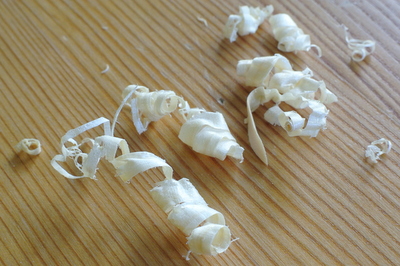I made a poor-man's rebate plane following the approach shown by Paul Sellers in his blog and video
It is made from pine (construction timber, probably spruce) so isn't likely to be accurate or durable but it seems to work
I tried it out on another piece of spruce and am having a couple of problems,
- I find it hard to control the depth of cut, tapping the chisel usually results in a very coarse shaving.
- The rebate depth is hard to control to get uniform depth from end to end, I guess I need to add a depth stop.
- The side wall tends to be very rough and has some shreds of shaving attached.
My reason for making this was to see if it would serve as a plough plane to make a new frame for a garden cold-frame. I need to make a housing (dado) to hold the plastic glazing. Since this isn't fine furniture I'm not too concerned but I do have the same problems I'd like to eliminate
Here's some early coarse shavings and some newer thinner ones
How can I improve the results I get?





